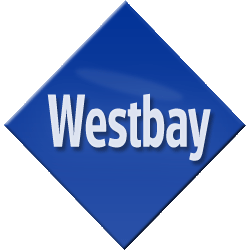- This topic has 156 replies, 1 voice, and was last updated 14 years, 2 months ago by
Gurjinder.
-
AuthorPosts
-
22nd February 2007 at 17:05 #34535
pix
Guesthi robbin,
ok, now i understand better… maybe i can help.
your software is supposed to work at a network level ?
then let’s say you have the busy hour of the network.
you need to introduce the notion of “area” in your software. Basically, this “area” concept include the covered area in your network and the density of site you’re planning to put (number of sites / sq. kilometer).You can also define different types of area (dense urban = high density of sites, etc..)
Once you have the density of sites (this is give by the planning team and/or the tendering team), you can compute the average amount of TRX needed per site.
However, let me tell you, your software will only provide you with an average needed capacity. If you want more detail, you need a planning tool, which uses not only the concept of “area” but also of “coverage”….
I know i’m not very clear, but i hope to give you some leads here.
23rd February 2007 at 09:02 #34536Chathura
GuestHi Robbin Coker,
are you looking to calculate NW capacity by BH Traffic?, if so, it can be done easily.or else if u r looking to forecast Nw capacity/BH Traffic by available BH Traffic data, several methods can be used.
Pls tell me, what do u want to calculate?
Atleast if u can find NW Congestion, ur calculation will be more accurate..
Regards,
Chathura28th February 2007 at 19:01 #34537Pix
GuestChathura,
Easy… ? Dimensionning a network simply by knowing the amount of traffic it will carry ? It can work on a small area ( city, a rural region) but it can’t work on mixed environment. In the latter case, you can’t now how many BTS and TRX you’ll need to provide enough coverage.
Let’s not forget that a network is primarily design to cover a certain surface of land (in sq. km). The national government will force the operator to cover a certain percentage of land.
Let’ take a stupid example : With one site, with 12 sectors and 12 TRX per sector, you can provide capacity for a whole province, but you will not be able to provide coverage.
1st March 2007 at 11:21 #34538Chathura
GuestPix, Robin,
I agree with you PIX, but I guess robin just need to know the NW capacity from carried BH traffic. I’ve mentioned only abt capacity dimensioning & not anything abt coverage planning
rgds
6th March 2007 at 15:21 #34539Vaughan
GuestHi,
I am working with the following configuration: –
2 TRX – (16 TS)
1 BCCH – (1 TS)
SDCCH – (2 TS)
2 Reserved GPRS (2 TS)
Remaining GSM= 11 TSHow do I work out how many TSs are being used for GSM assuming the Half rate percentage?
Average GSM Blocking in BH = 0.000949785%
Offered Average GSM traffic =
12.17574554 Erlangs (including Blocking)
Half rate = 95%Kind regards,
Vaughan
6th March 2007 at 19:27 #34540Pix
GuestChathura,
I fully agree with you, it is possible to compute a capacity out of a predicted offered traffic… It works at a cell level for instance.
I’m just pointing out that any serious dimensionning engineer will never based a study on the traffic offered only (talking about radio capacity). It is possible, but it is useless.
If you’re dimensionning a BSC, or A interface, or a MS, etc.. ok, a capacity-based study will work.
I’m sorry if i’m being stubborn, but the guy is gonna build a tool that is absurd… it’s a pity ! he’d rather spend his time doing something that’ll help us roll-out a network 😉
7th March 2007 at 11:33 #34541maria
Guesthi everybody,
i m new in GSM, i have mini-project about conception of traffic for GSM network.i ‘ll be glad if someone help me how to prvide documentation about.
regards
7th March 2007 at 15:31 #34542Pix
Guesthello maria,
you can easily simulate a GSM network by using the same hypothesis as the ones used for Erlang B Law (check on wikipedia)
basically, it’s random usage of resources, etc..
20th March 2007 at 10:56 #34543Soumendra Panda
GuestHow can i improve the Quality of GSm Networks.Pls give me the basics and guidelines related to this topic.
21st March 2007 at 07:30 #34544Pix
GuestHello Pandra,
Basics for optimization:
– clean frequency planning (no interference)
– all neighbours are correclty defined
– avoid same bcch/bsic among cells of the same LAC (or at least the same geographical area)
– check orientation and tilt of antennas, so that coverage is good, but not too much overlap in cities.Once you’ve done that, your netwtork is optimized at 95%
Final step : check all your radio parameters are set to their default values (cf your vendor documentation)
31st March 2007 at 00:13 #34545sanmi isinkaye
Guestplease if any one can just help me with how congestion is being controled on the GSM network, and the various congestion that we have. you can mail isinkayes@yahoo.com
4th April 2007 at 07:18 #34546Soumendra Panda
GuestWhat is MAIO and how it is related to the network?
4th April 2007 at 07:18 #34547Soumendra Panda
GuestHalf rete or full rate ,
wghich one is better and how
4th April 2007 at 08:18 #34548Pix
GuestHi Soumendra,
The half-rate is better, but the full-rate is also better. But in a way, we’re all better.
MAIO is related to the network in the sense that it is a radio parameter.
If you have more of those questions, please keep them coming, they are very better.
9th April 2007 at 11:55 #34549Jaspreet Singh
GuestCan anyone throw some light about GSM Basics like BCCH/Bsic/Frequency Planning.
-
AuthorPosts
- The forum ‘Telecom Design’ is closed to new topics and replies.


